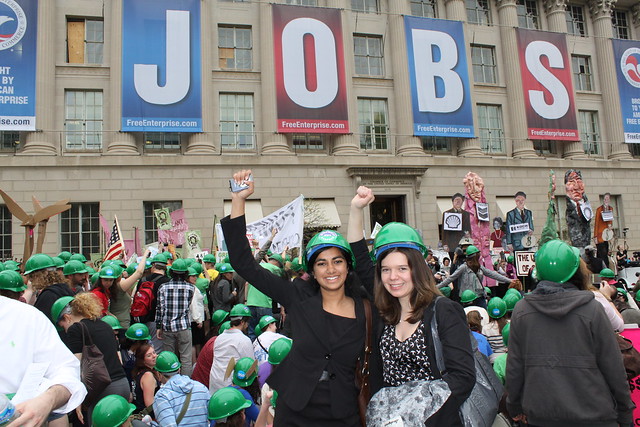By Daniela Lapidous, high school junior at the Harker School in San Jose, CA, and member of the ACE Youth Advisory Board
Phew… it’s been a week since one of the most amazing weekends of my life.
You see, from April 15-18, fellow ACE Youth Advisory Board member Shreya Indukuri and I got the chance to attend PowerShift in Washington, D.C. and it was INCREDIBLE!

Basically, it was a gathering of about 10,000 inspiring young people rallying for clean energy action - you can read more about our trip on the blog post Washington D.C.'s awesome regional educator, Daisy, wrote up.
Besides the details of who we met and what we said, I guess one thing I still marvel at when I look back at the experience is the unified diversity we saw there. (Attack of the oxymorons!)
The thousands of college students there came from all walks of life – from all parts of the country – from all racial, ethnic, and socioeconomic backgrounds. We don’t listen to the same music, we don’t all say “hella”, and we probably don’t even have the same definitions of what being completely “green” looks like – but we were all there, being united by the issue of clean energy! Who expected that?
The fact is, everyone should have expected that, because the issue of climate change and clean energy deserve to unify us all.
Shreya and I met people who are being affected by these issues now. We met Cassie, a 17 year-old activist from Southern California who got asthma because of pollution-emitting factories in her city. We met countless people who live next to toxic waste, who have seen extreme weather, and who are seeing pollution destroy their communities. We heard stories of people in Appalachia who are suffering enormously because of mountaintop removal (for the sake of coal mining!).
Climate change and dirty energy are not issues that will "someday" affect our "grandchildren" - they are right here, right now. It's only a matter of time before they show up on all of our doorsteps and force us to work together, whether we like it or not.

There was also the diversity of people we met outside of PowerShift. We met Aneesh Chopra, the Chief Technology Officer of the US, and Arun Majumdar, the director of ARPA-E (an innovative energy research department of the government).
Let’s face the facts: Shreya and I are still high school juniors. We are from California, and we do not wear business clothes on a regular basis. We have APs next week and prom in two weeks. We are very different from the high-level executives we were lucky enough to meet.
But hearing about a low-cost, very effective solution to energy efficiency – the smart meters that we are installing at high schools – was positive for everyone! Mr. Chopra and Mr. Majumdar were both impressed that we saved 13% off our school’s energy bill in one year and they want all of the schools in the country to get involved.
No matter how different you are, passion and simple solutions can inspire and connect people – “environmentalists” and “non-environmentalists” alike. When you share your story, people are inspired to craft their own.
So, go – it’s not hard to find a diverse group of people, or a diverse group of problems, or a diverse world out there… but it’s your job to find the one way to communicate climate change in a way that will unify your audience.
You, the reader, and I are probably pretty different, too. But we're also pretty alike, because Shreya and I are average students who just sat in an ACE assembly two years ago and were inspired to act. Last weekend, we couldn’t believe we were standing in front of the White House as part of this chain of events. The fact is – this could be you. This WILL be you, because - since you're reading this - we're connected by at least a spark of inspiration to act on climate change.
Now get offline and... go unify some diversity or something! Read more!












